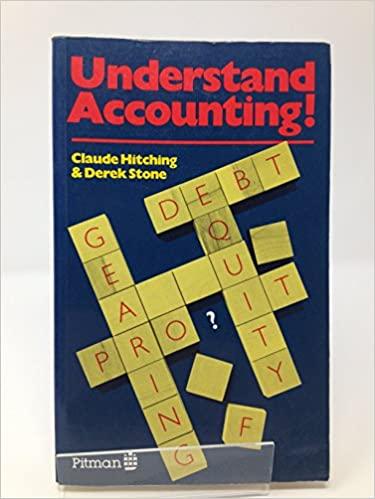objective question

On December 31, 20X3, Saxe Corporation was merged into Poe Corporation. In the business combination, Poe issued 200,000 shares of its $10 par common stock, with a market price of $18 a share, for all of Saxe's common stock. The stockholders' equity section of each company's balance sheet immediately before the combination was: Poe Saxe Common Stock Additional Paid-In Capital Retained Earnings $3,000,000 1,300,000 2,500,000 $6,800,000 $1,500,000 150,000 850,000 $2,500,000 In the December 31, 20X3, combined balance sheet, additional paid-in capital should be reported at Select one: a. $2,900.000 b. $1,300,000 c. $1,450,000 d. $950,000 Grout Company reports assets with a carrying value of $420,000 (including goodwill with a carrying value of $35,000) assigned to an identifiable reporting unit purchased at the end of the prior year. The fair value of the net assets held by the reporting unit is currently $350,000, and the fair value of the reporting unit is $395,000. At the end of the current period, Grout should report goodwill of O Select one: a. $45,000 b. $35,000 C. $10,000 d. $25,000 T will Company has a reporting unit with the fair value of its net identifiable assets of $500,000. The carrying value of the reporting unit's net assets on Twill's books is $575,000, which includes $90,000 of goodwill. The fair value of the reporting unit is $560,000. Twill should report impairment of goodwill of Select one: a. $0 b. $30,000 C. $60,000 d. $15,000 On April 1, 20X2, Jack Company paid $800,000 for all of Ann Corporation's issued and outstanding common stock. Ann's recorded assets and liabilities on April 1, 20X2, were as follows: Cash Inventory Property & Equipment (net of accumulated depreciation of $320,000) Liabilities $ 80,000 240,000 480,000 (180,000) On April 1, 20X2, Ann's inventory was determined to have a fair value of $190,000, and the property and equipment had a fair value of $560,000. What is the amount of goodwill resulting from the business combination? Select one: a. $50,000 b. $0 c. $180,000 d. $150,000 A and B Companies have been operating separately for five years. Each company has a minimal amount of liabilities and a simple capital structure consisting solely of voting common stock. In exchange for 40 percent of its voting stock A Company, acquires 80 percent of the common stock of B Company. This is a "tax-free" stock-for-stock exchange for tax purposes. B Company's identifiable assets have a total net fair market value of $800,000 and a total net book value of $580,000. The fair market value of the A stock used in the exchange is $700,000, and the fair value of the noncontrolling interest is $175,000. The goodwill reported following the acquisition would be Select one: a. Zero b. 295,000 c. $60,000 d. $75,000 Topper Company established a subsidiary and transferred equipment with a fair value of $72,000 to the subsidiary. Topper had purchased the equipment with ten-year expected life of four years earlier for $100,000 and has used straight-line depreciation with no expected residual value. At the time of the transfer, the subsidiary should record Select one: a. Equipment at $100,000 and accumulated depreciation of $40,000 b. Equipment at $120,000 and accumulated depreciation of S48,000 c. Equipment at $60,000 and no accumulated depreciation d. Equipment at $72,000 and no accumulated depreciation













